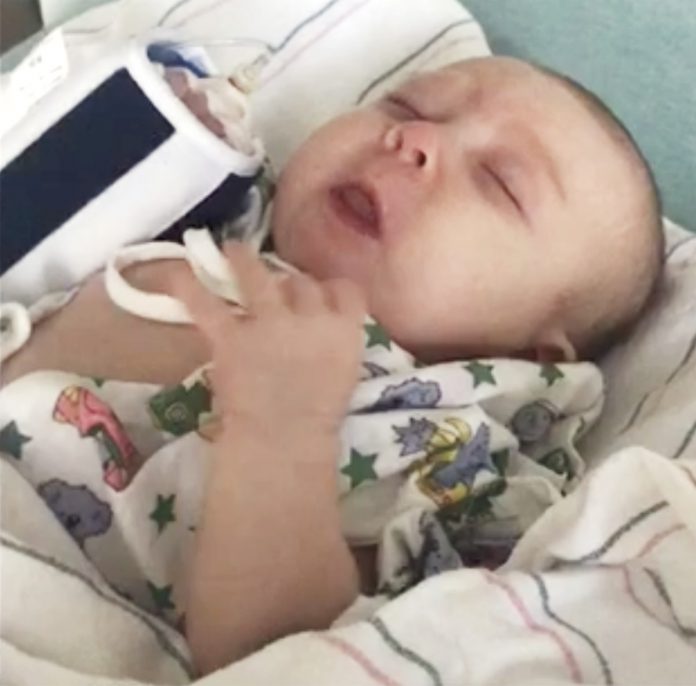Parents brought their 8-week-old daughter with complaints of worsening cough for the past 2 weeks. The baby had been afebrile, but her whooping was associated with coughing. Her parents report witnessing pauses in her breathing.
Upon inquiring, it was told that the baby had been in contact with her grandmother, who had a probable diagnosis of bronchitis due to her cough spells.
The vaccination history of the grandmother was unknown, but the infant’s mother had received tetanus–diphtheria–acellular pertussis (Tdap) vaccination during pregnancy. Considering the age of the infant, she wasn’t yet vaccinated for obvious reasons.
On examination, the physician observed characteristic whooping cough.
Laboratory investigation revealed a high leukocyte count of 14,500 per cubic millimeter (reference range, 6900 to 12,800) with lymphocytosis. A sample was taken from the nasopharynx for a polymerase chain reaction to confirm Bordetella pertussis infection.
The infant was admitted for treatment. Azithromycin was started. She had multiple episodes of coughing and apnea during her stay. Oxygen saturation dropped to below 50%, and she had bradycardia (heart rate of 50 beats per minute). Bag-mask ventilation was initiated as a rescue measure. Supplemental oxygen was started, and she was fed through a nasogastric tube. She was discharged after 25 days.
All close contacts, i.e., her parents and her grandmother, were also treated with azithromycin as pertussis is a highly contagious infection.
At the 3-month follow-up, the infant had made a full recovery, she had no symptoms, and had normal growth and development.
After the advent of vaccination, usually, the patients infected are of the age group in whom the scheduled vaccinations course hasn’t been completed yet.
Symptoms usually appear 7 to 10 days after being infected. The initial 3 weeks are the most contagious ones.
The infection has 3 phases:
- Catarrhal Phase- Symptoms that may be confused with a viral infection are common during this phase.
- Paroxysmal Phase- This phase, as the name suggests, is characterized by bouts of coughing lasting up to minutes, which may be followed by posttussive vomiting.
- Convalescent Phase- A chronic cough may persist during this phase, which lasts for a couple of weeks.
Antibiotics resolve the infection effectively. Erythromycin, clarithromycin, and azithromycin are the agents of choice for patients equal to or above 1 month. In young infants, complications of pertussis include apnea, bradycardia, pneumonia, seizures, and death.
References
Debra Hillier, M. (2019, July 11). Whooping Cough in a Young Infant. Retrieved from The New England Journal of Medicine: https://www.nejm.org/doi/full/10.1056/NEJMicm1814607
Whooping cough. (2018, November 05). Retrieved from Mayoclinic: https://www.mayoclinic.org/diseases-conditions/whooping-cough/symptoms-causes/syc-20378973




